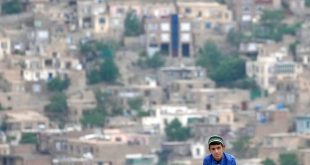According to the international organizations, around 2.5 million Afghans live below the poverty line. Nearly 1.53 million people face food insecurity and 7.53 million others are threatened by food insecurity. Hundreds of thousands of Afghans suffer from malnutrition and hunger. Skyrocketing price hike and inflation are adding to the injury. The relevant authorities did little to feed the whole population, though the target is achievable. There are a number of factors that get in the way such as flawed policies of the government and lack of financial and technical resources.
There will be no food security unless the loopholes in the policies were plugged and the gap was filled. People and the government would face serious challenges this year due to low rainfalls and snow. It is feared that drought would hit the country. Ministry of Agriculture, Irrigation and Livestock (MAIL) and other relevant ministries had not provided any information in this regard, but the pace of climate change and the snowfall suggest that drought is approaching fast.
This year snowfall was unsatisfactory. Many water reservoirs including dams would run out of water if the snow does not cover the mountains till March. This will land the government into the troubled water as it could not meet needs of farmers to irrigate their farmlands. Takhar, Badakhshan, Badghis, Paktika, Zabul, Ghor, Bamyan, Samangan and Nuristan provinces will face severe food crisis if there was low snow and rainfall. The expected drought will become an ugly reality. It will give birth to food insecurity. Around 75 percent of the total population is associated with agriculture sector. The expected drought would hit the farmers hard and would create food insecurity in the country.
According to the last year’s report of the Food Security and Agriculture Cluster, a non-profit organization, 1.5 million Afghans are now considered severely food insecure. Another 7.3 million people (over one in every four Afghans) are moderately food insecure. The number will jump if precautionary measures were not taken. To achieve food security, the government needs to manage water resources properly. Without water security we cannot achieve food security. For better water management it is essential to enhance coordination among the relevant organizations. Coordination between land and water resource mangers is imperative.
Achieving food security is not so difficult if proper measures were taken. First, the government shall devise a well-thought mechanism to manage water resources. Second, potential of agricultural lands should be increased. Third, farmers shall be educated to use fertilizer more efficiently. Adjustment in placement, timing and types of fertilizers will prove helpful. Fourth, irrigation systems shall be improved. Farmers shall be encouraged to plant crops that use less water such as wheat. Last but not least, we shall reduce the food waste.
 Afghanistan Times
Afghanistan Times

